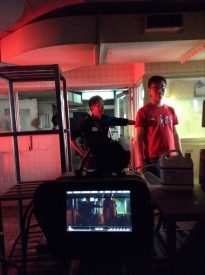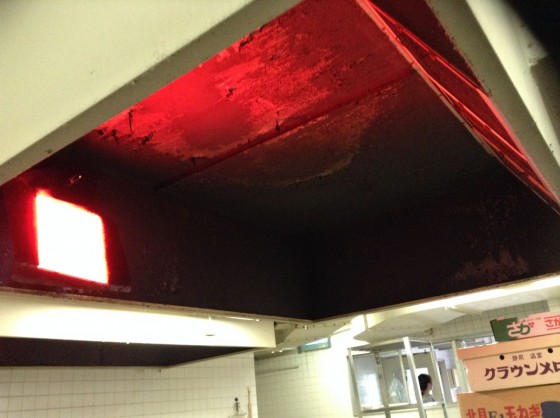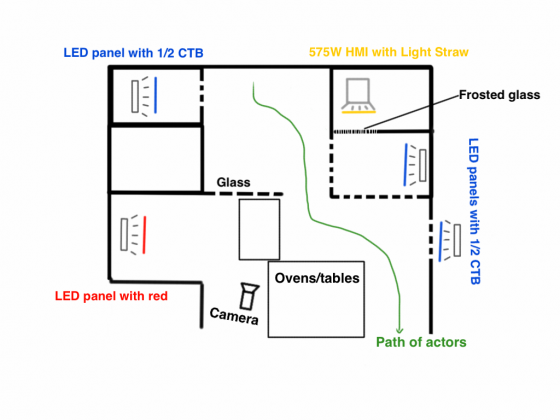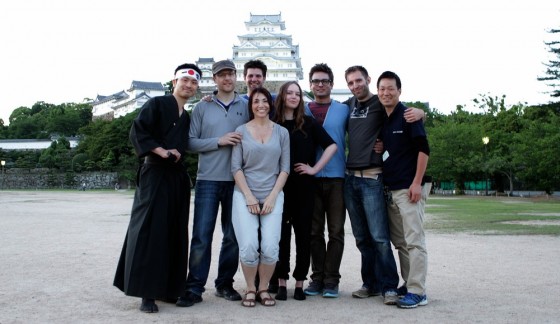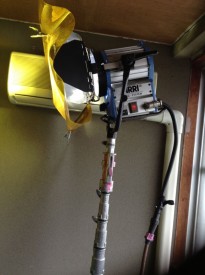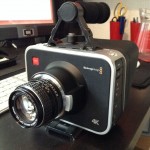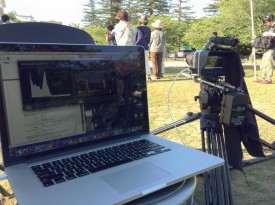
This is the final instalment looking back at the whirlwind shoot I DPed in Japan at the start of this month. Part 1 looked at the equipment package, Part 2 covered an interior scene, and Part 3 covered night exteriors.
By the time we wrapped those night exteriors it was about 4:30am and starting to get light. After some well-earned sleep, we reconvened at 3pm to shoot the daylight exterior scene in front of Himeji Castle – featured in You Only Live Twice as a Ninja training school.
The first shot had to start with a picture postcard composition of the castle and a martial artist, then pan to reveal Daisy and a crowd watching her, while still keeping the castle in. This took some considerable time to set up, carefully placing all the extras. To balance the opening composition, I framed it with a tree in the foreground. This is the kind of thing you have to look out for as cinematographer, because simply shooting your cast in front of a landmark can result in a very flat image if there aren’t other elements in the frame to add depth.

After watching the initial blocking, I requested that everything be flopped in order to place Sydney in direct sunlight and Daisy in backlight. I knew that the backlight would look fantastic on Daisy’s hair – especially as the sun was very low by the time we got to her CU – and we could fill in her face with flattering bounce from a big white sign that the ever-resourceful Keisuke had brought along.
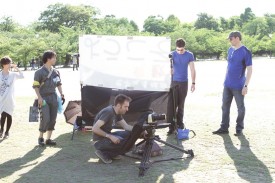
Masculine facial features tend to look better in harder, direct light, which is why I was happy to face Sydney into the sun. (There’s more to it than that though, and I’ll be debating the ethics of lighting men and women differently in an upcoming post.) However, for the first take of Sydney’s CU, worried about shine and squinting, I chickened out of the hardlight and put up a sheet of Full Frost to soften it. For the second take I got rid of it, which made for better lighting continuity with the wider shots, but left Sydney looking very shiny. There’s only so much powder can do when someone’s looking straight into the setting sun. I’ll be interested to see which one Devon prefers in the edit, although his decision will likely be based on performance rather than light and shine! A good colourist can probably reduce the shine anyway. If only I’d had 1/4 or 1/2 Frost to get the best of both worlds.
Judging when to shoot the various angles in your scene is an important part of a DP’s job for day exterior work, and especially so at Golden Hour. Devon wanted to shoot Sydney’s CU before Daisy’s, his logic being that if we lost the sun before we shot Daisy then it wouldn’t matter because her face was in shadow anyway. Knowing that I was probably going to diffuse Sydney’s light, I felt the greater priority was capturing the lovely backlight on Daisy, and so asked to shoot her first.
Anyway, when the sun went down, that was a wrap for the brief but intense Japan shoot. Many thanks to Devon and co for bringing me along, and to the people of Himeji for welcoming us so warmly.




